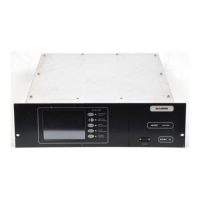12/20/11 888-2595-001 5-27
WARNING: Disconnect primary power prior to servicing.
Section 5 Maintenance and Alignments
ZX Series
STEP 8 Verify no loose hardware has fallen to bottom of amplifier chassis over
time.
STEP 9 Vacuum any dust accumulations from rear chamber of amplifier chassis.
STEP 10 Vacuum any dust accumulations from fins of output assembly. Use long
vacuum cleaner attachment as necessary to gain access to heatsink fins
via air input plenum on far right side behind front door.
STEP 11 Vacuum any dust accumulations from chassis fan blades and PS module
fan blades.
STEP 12 Illuminate inside of transmitter rear chamber and inspect all cables for
signs of cracking, abrasions, or heat discoloration.
STEP 13 Inspect all exposed PC boards for signs of heat discoloration or rings of
dried solder flux, an indication of partial solder melting.
STEP 14 Inspect splitter boards for any loose, disconnected, or bent ballast loads.
STEP 15 Shine light through combiner cover (but do not remove) to inspect
output assembly combiner coils for any corrosion that is crusty or pasty.
It is normal for the coils to change color over time. This does not
negatively impact their performance, provided it is simple oxidation and
not a more aggressive corrosion due to harsh air pollution components.
STEP 16 Verify all push-on (faston) connections are fully seated on PA
backplanes, PS interface board, AC mains inputs, etc.
STEP 17 Shine light through combiner support frame to deck of output assembly
and inspect ballast loads for burning or cracking.
STEP 18 Close amplifier chassis rear door.
STEP 19 Return hex key to storage position.
STEP 20 If transmitter is ZX7.5 or ZX10, visually inspect 2.5kW RF load on rack
cabinet rear door for signs of cracked resistors or other debris.
STEP 21 Remove AC mains lockout precautions and apply AC mains power.
STEP 22 Press front panel ON button to turn transmitter on.
STEP 23 Verify transmitter returns to full power and no alarms are reported.
STEP 24 As desired, use off-air opportunity to verify integrity of all safety
interlock circuits such as station load temp sensor, patch panel position
switches, coaxial switch position switches, etc.
STEP 25 As desired, use off-air opportunity to operate transmitter into station test
load and verify test load integrity.
